Clinical and consulting psychotherapist, Dr. Paul Hokemeyer tells us that, “existential dread is the terror we experience in our awareness that we are transient beings acting out life on a precarious stage. It’s a phenomenon that’s universal among humans, but that varies in its intensity.” Essentially, existential dread is the result of hyperawareness of our own minuscule nature within our universe. Cosmic horror movies capitalize on this hard-to-navigate realm of insecurity and inner turmoil. When we look too closely or are too aware of something we don’t understand it can cause a break in reality and ultimately thwart our attempts to handle our own mental health. This leads us to a better understanding of why cosmic horror is such a tricky thing to tackle within the horror film industry and why it is inevitably an unqualified success or a laughable failure.
How to Translate Cosmic Horror to the Big Screen
One of the main reasons why cosmic horror writers such as Lovecraft can never hope to be fully realized on the big screen is the intangibility of existential dread. You can’t put a form to it, it is simultaneously within and without our own understanding and it’s something that Lovecraft himself aptly described within the philosophy of his own body of work.
The most merciful thing in the world, I think, is the inability of the human mind to correlate all its contents. We live on a placid island of ignorance in the midst of black seas of infinity, and it was not meant that we should voyage far. The sciences, each straining in its own direction, have hitherto harmed us little; but some day the piecing together of dissociated knowledge will open up such terrifying vistas of reality, and of our frightful position therein, that we shall either go mad from the revelation or flee from the deadly light into the peace and safety of a new dark age.
H.P. Lovecraft
Since the cosmic horror subgenre doesn’t rely solely on jump scares, it’s difficult to really sink your teeth into what is truly so frightening about these kinds of stories. Few movies have been fortunate enough to capture the existential dread that we get from the literary cosmic horror; these precious few examples leave us wanting more. What we end up finding when we delve deeper into trying to understand such an intangible fear, is that the fear arises from within ourselves, our paranoia, insecurities, and the emotions that these things stir up that we are nowhere near prepared to deal with.
The realization of cosmic horror is that there are these unknown, inhuman, races of beings that have inexplicably existed since times before life on Earth could boast multicellular organisms. These beings, creatures, or ancient powers don’t care about us or our existence–we are insignificant and immaterial to the grand scheme of things. This insignificance fuels our fears and results with the ultimate imperceptible terror, the unknown. Fear of the unknown has many succumb to insanity and that’s exactly what happens with the best Lovecraftian literature.
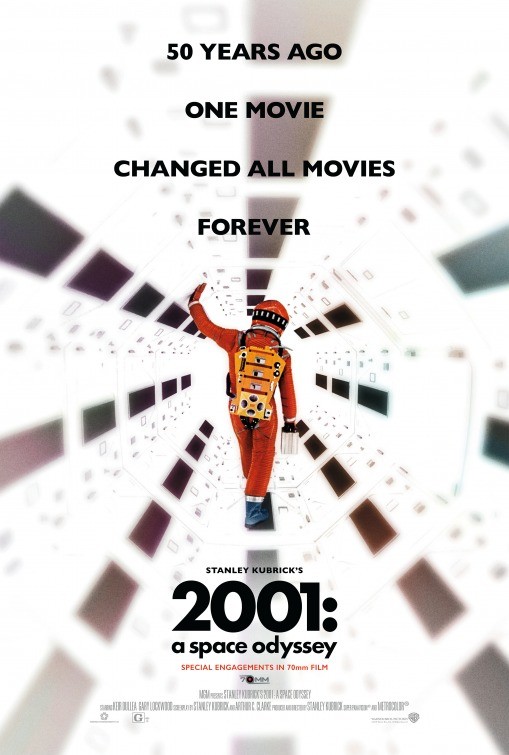
2001: A Space Odyssey (1968)
We have Stanley Kubrick to thank for making the first movie to successfully capture the vision of cosmic horror. His vision met the Lovecraftian horror requirements pretty spectacularly; while critics either hailed this movie as a boring spectacle of lights or a visionary way to explain the cosmos, one thing is for certain–Kubrick gave us a possible view into the future that we could have never before have even tried to explain. This piece is a solid example of cosmic horror that meets both our aspirations of where we could possibly go as the human race and the place we also inch towards with trepidation. Lovecraft’s writing suggested that in his world that extraterrestrials were actually his inspiration for the ancient gods or beings that societies long since passed had worshipped.
Clarke’s writing supported Lovecraft’s creative expression of the ancient ones–an idea further supported by the sequel to 2001: A Space Oddysey which was titled 3001: The Final Odyssey. The only major difference between the attitudes of Clarke and Lovecraft lies within the approach of the aliens towards humanity. Where Lovecraft features an indifferent perspective–as if humans were aphids to their godly prowess, Clarke suggests a far more amicable relationship. What really matters in this narrative though is that Lovecraftian horror elicits an existential dread which is made clearly possible in Clarke’s literary works and Kubricks eventual screen adaptation.
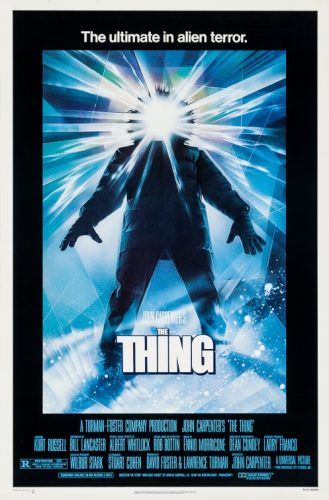
The Thing (1982)
John Carpenter is considered a master of horror and that’s a fair assessment, in his long career of horror creation he has been the main name attached to some of the most famous and most underrated movies the horror genre can boast about. His first big studio movie came to us in 1982 via The Thing and it’s also a perfect example of cosmic a cosmic horror movie. Almost forty years after its creation and it’s still a classic within this subgenre. Despite initially coming across as a monster movie, when it’s analyzed with a heavier lens, it’s clear that it perfectly fits the bill of something that’s deeper, darker, and far more intangible than just an evil monster. While The Thing (1982) does deliver the monster, it’s the actual form of this invading force that is ultimately well beyond our ability to comprehend.
We never see the monster in its true form, because it’s always shown either in the guise of one of the crew members or in its transformation to its new disguise. The monster effects were considered state-of-the-art in 1982, it may seem like they would be outdated by now, but don’t be fooled, Rob Bottin continues to enthrall us with his ability to both elicit a sense of wonder and revulsion; they also keep us in the dark just like Lovecraft himself thrived on being non-descriptive, choosing to encourage readers to envision their own, “indescribable horror.”
The bread-and-butter of the cosmic horror genre is typically that which cannot be seen, right? Well, John Carpenter gave us all a middle finger when he essentially slapped us in the face with a monster that we can not only see but one that we still can’t give a proper description of. This monster doesn’t behave in a manner that would suggest it’s a creature that belongs to our world, which leads us to believe it’s an alien. Not to spoil anything but it is the main reason that we suggest watching this movie before the prequel, of the same name, that was released in 2011. The monster (alien?) is just the tip of the cosmic horror iceberg; what the creature ultimately represents is the debilitating nature of what it means to have your entire worldview changed forever.
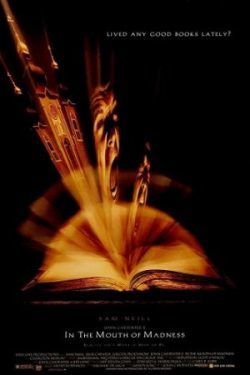
In the Mouth of Madness (1994)
Another John Carpenter movie, albeit quite a bit more underappreciated, In the Mouth of Madness (1994) definitely did its job of inviting existential dread upon audiences. Curiously enough, while the audience experiences this indeterminable terror, so does our protagonist; we watch as his reality unfolds around him and he is exposed to the ultimate mindfuck at the end of it all. What is real? What can truly be expected in life when we don’t even know how to cope with the existence of the unknown?
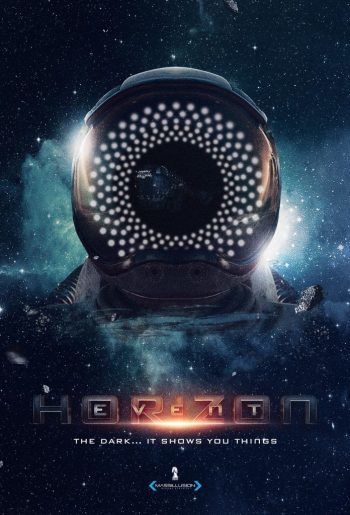
Event Horizon (1997)
This classic sci-fi movie takes cosmic horror to a more literal level, by being set in the actual cosmos. This movie is amazing because it functions on so many levels, as a mystery, science fiction, horror, and action movie. The characters on board are sent to discover what happened to the crew of a ship that had been sent to discover parts of the universe and had otherwise been missing in action for nearly a decade. After it suddenly reappears, the question on everyone’s mind is–where was the Event Horizon the entire time?
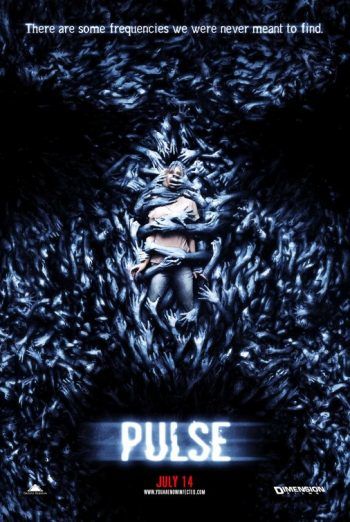
Pulse (2006)
This movie is where Wes Craven finally took a crack at cosmic horror and even if he didn’t do it intentionally, he still technically did it. While this movie was basically a remake of the Japanese film Kairo (2001), it begs the question of what would happen when technology crossed paths with the other side. While the move came across as simply another American remake of a successful Japanese film, it does still make it to the cosmic horror party.
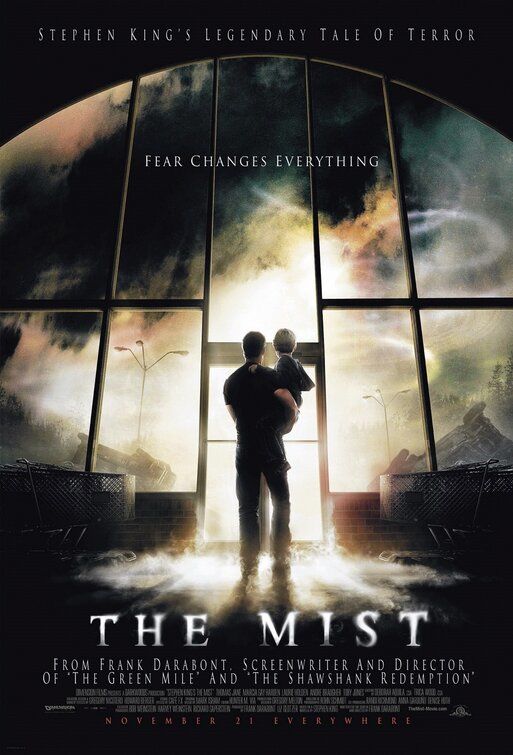
The Mist (2007)
This movie brings us a psychologically traumatizing kind of fear–the kind that makes you lose faith in humanity and its ability to maintain some semblance of civility and order throughout chaos. What is really terrifying about this movie isn’t the otherworldly monsters which we get decent exposure to, it’s the characters and their inability to withstand the stress of their situation. We see the characters go through an extreme transformation in their two days of being held captive by the mist; at first cooler heads prevail, but constant fear-mongering by the town’s bible-thumping mentally disturbed resident leads a majority of them to demand blood sacrifice to appease the monsters that they believe God has sent to punish them. Classically terrifying cosmic horror that has aged well over the past decade.
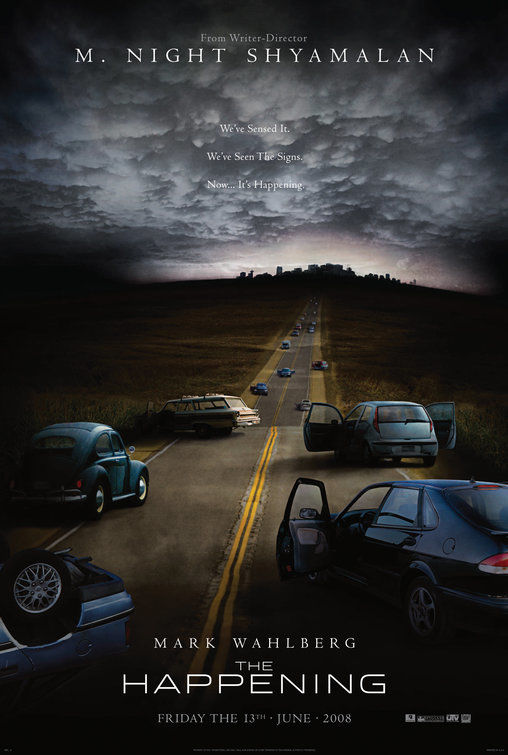
The Happening (2008)
This is probably the movie that least represents cosmic horror within the context of this list–since this movie deals with forces that originate on Earth, particularly Mother Nature herself, instead of an ancient being that has come to take over and extinguish our existence with little to no premeditated vision of extermination. It still fits the subgenre though, because of the inability to truly comprehend the forces at work and the feelings that we see the characters experience throughout the movie. Even though we’re left with an explanation of what our protagonists have encountered, we’re also left with this unrelenting feeling that we don’t actually possess as much control over our existence as we initially believed.
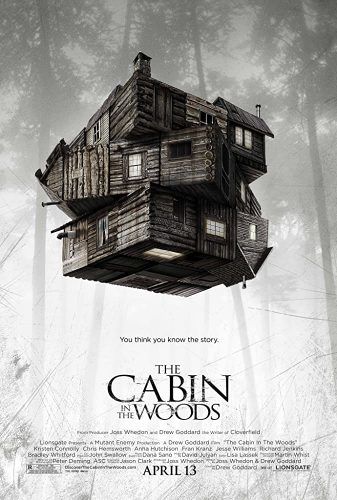
The Cabin in the Woods (2011)
Perhaps its the stereotypical creepy gas station attendant, or the lack of accumulated dust on the relics in the cellar of the cabin, or perhaps it’s the pain-worshipping redneck zombies that dig their way out of the ground–this movie doesn’t walk or quack like a cosmic horror duck, at least not at first. If we discount the major hints that are dropped throughout this movie, the entire movie may end up shocking you once it reaches its finality. It stands to reason though, that if you pay attention throughout the movie you’ll be on edge and most notably creeped out by the subtle external influences at work in this complex, comical, and downright terrifying film. In the end, the character’s realization of what is really going on is what sells this movie as a true gem in the realm of cosmic horror. Not only do they go through all of the stages of grief in a twenty-minute span, but they also cross over into the realm of acceptance within the insanity that they find themselves facing.
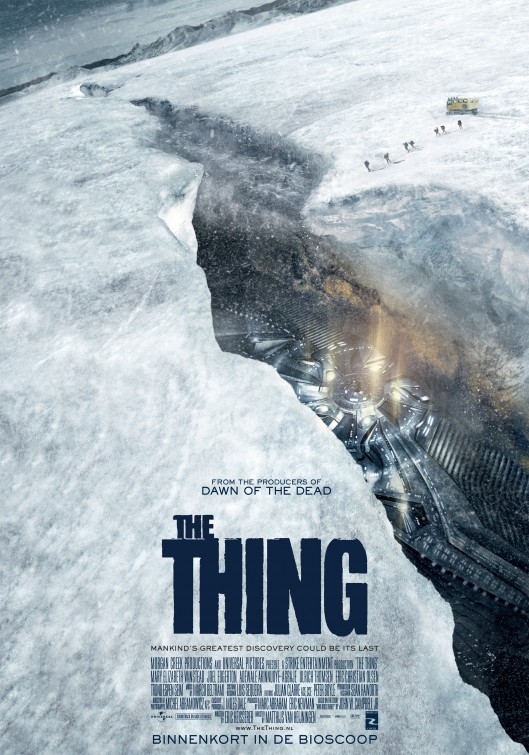
The Thing (2011)
Even though The Thing (2011) came out almost thirty years after the original 1982 version, it actually serves as a prequel to John Carpenter’s first masterwork. More is revealed to us about this universe throughout the movie, but it’s almost like this prequel was meant to be watched after we’re already exposed to the monster and already know the havoc it can wreak within a small, claustrophobic, and insanely isolated region. In our opinion, watching this one as if it were a sequel really helps to keep the original mysterious and terrifying. So if you’re planning on watching these two movies back to back, watch this one last.
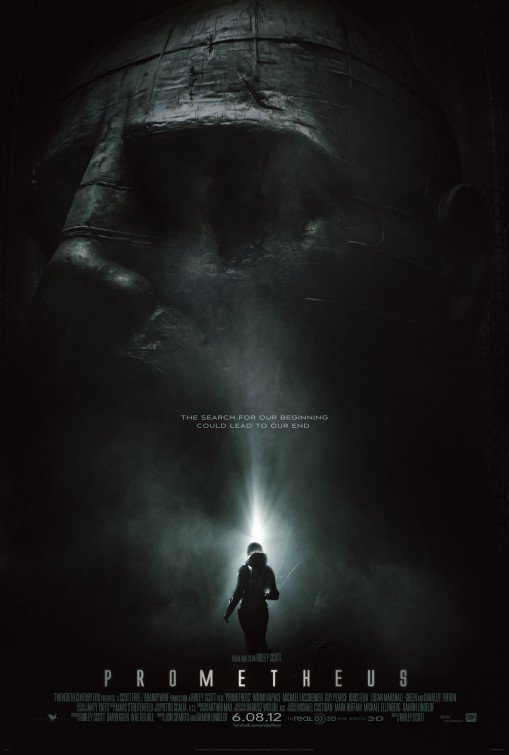
Prometheus (2012)
This movie was birthed from a movie franchise with an already extensive history, stemming from the Alien franchise that began its epic journey in 1979. The cosmic horror focus made this move unlike any of its predecessors, which all made their home in the action, science fiction, monster/alien horror, and thriller genres. We get to see the missing piece of this familiar Alien puzzle, but the Engineers weren’t exactly what was expected out of the story. It makes sense that fans of a violent and terrifying franchise wouldn’t be able to relate as well to a story that hinged on a narrative where human beings were simply a test species genetically engineered by an ancient race of beings. As a result and none-too-surprisingly, it didn’t do too well with the main following of the original franchise. So even though Prometheus (2012) was a highly anticipated movie, the fans of the original franchise weren’t too thrilled with this new cosmic horror focus of the overall story.
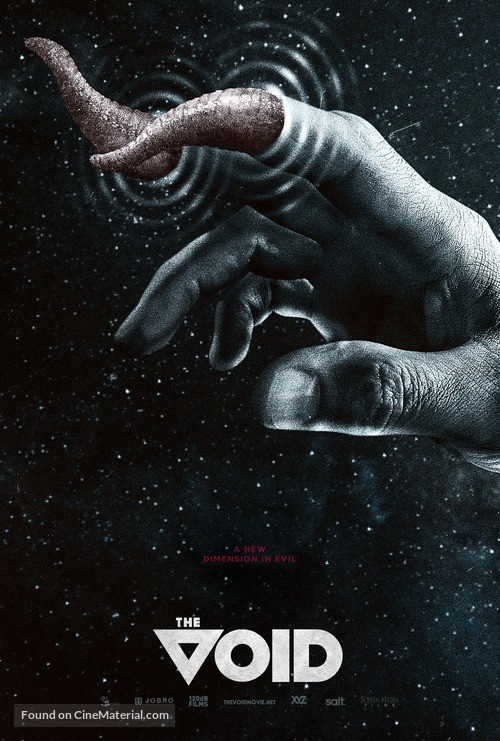
The Void (2016)
As creepy as it is confusing, this movie is a great example of cosmic horror. The creatures smack of Lovecraft’s strange influence, where there is no real ability to describe what they are. This all takes place in a pretty deserted hospital, which is creepy enough if you’ve ever seen a movie with the stereotypical abandoned and haunted medical center. All we really know when we watch this movie is that it attempts to convey the existence of evil things we can’t hope to know or understand and if that’s not cosmic horror, then we’re not sure what is.
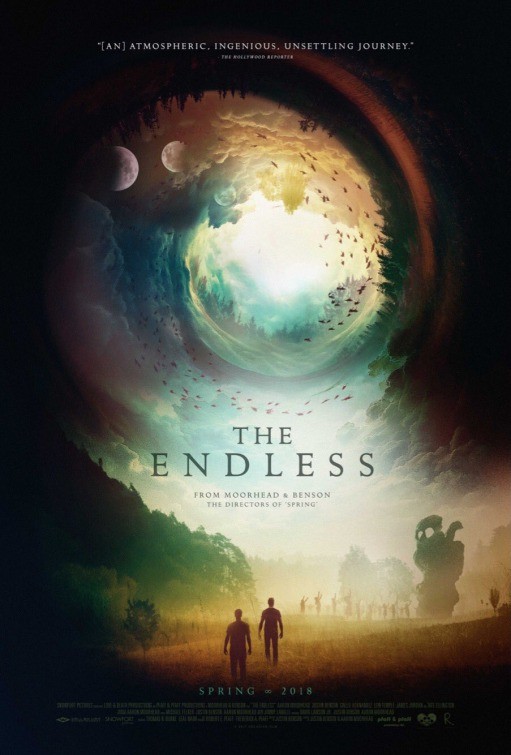
The Endless (2017)
If you’re the type that is intrigued by the psychology of cults and their idea of ascension within the context of mass suicide, then this movie is definitely for you. Outwardly it just seems like some kooky people who are looking for a form of validation through their belief system, but then we realize there are indescribable things at work behind the scenes. When we join two of the cult survivors who go back to find out what’s really going on we see that nothing is what it seems and that the mystery is hidden beneath the surface. The dread that we face from this movie is spurred by our need to know what is going on, so we sit on the edge of our seats waiting to see what our two protagonists came to find out.
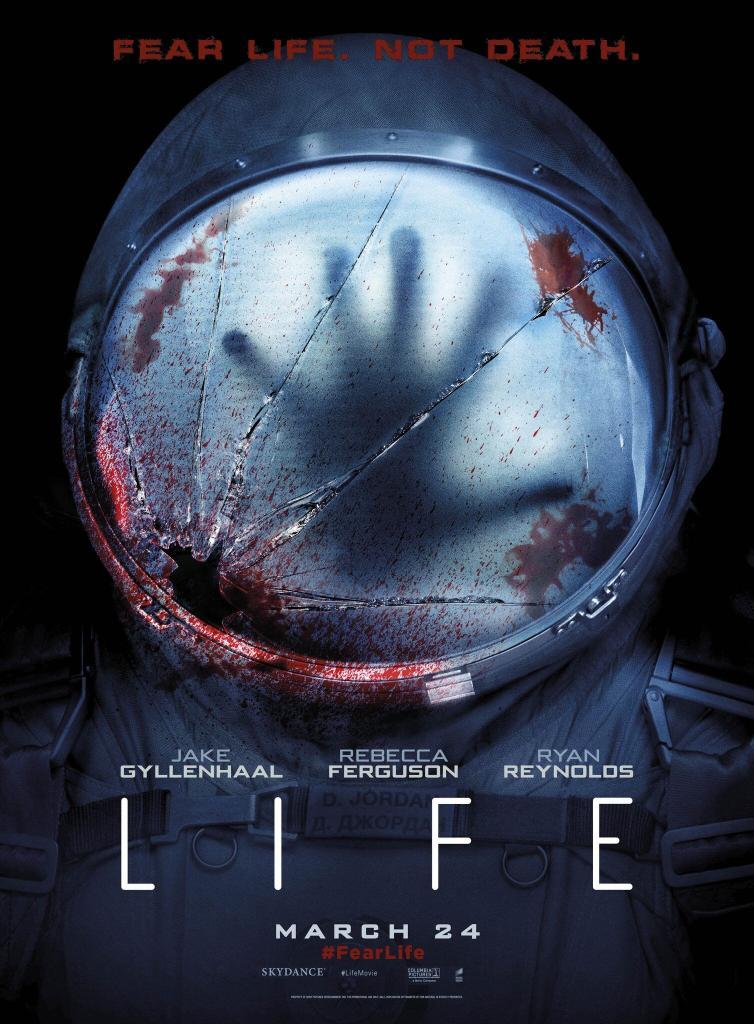
Life (2017)
It’s difficult to know whether or not a movie like this exists within the realm of cosmic horror–or if it’s just another alien movie. Here’s the thing though, even though we see the alien, monster, lifeform (or whatever you want to call it) throughout the entire movie, there is no viable way to know whether this is another evil alien, or just an uncaring being that has a predisposition to survive no matter what the cost is to another form of life. A huge part of cosmic horror is that the menacing force within the story doesn’t need to be evil–it just needs to be overwhelming and intangible, or unidentifable. Their trail of destruction needs to make you feel small, insignificant, and easily discarded.
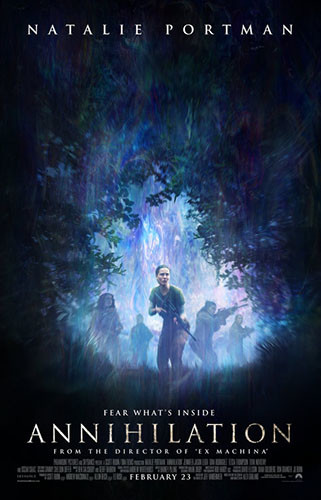
Annihilation (2018)
If you didn’t quite understand Annihilation (2018) then you’re not the only one, but that was sort of the entire point of the movie. Even though Natalie Portman dominated this movie in her typical fashion, the movie didn’t get a lot of credit for how intensely original it was; perhaps it was because there was no determinable wrap up to the story, but no good cosmic horror story does. While the jump scares and monsters should have lent to it being an instant horror classic, the terrifying nature of what was going on inside of “the shimmer,” and the inability for people to completely understand the grand theme of utter helplessness in the face of something so large and indefinable led to a lot of people saying it was a bad movie.
In the defense of Annihilation (2018), it’s not that it was a bad movie, there are just not a lot of people who understand or appreciate the classic Lovecraftian influences that make this movie such a success. There’s nothing better than a movie that leaves us questioning everything we know about our own existence, that is the very core of cosmic horror. We see the invading force of the movie literally taking everything it encounters in its path and changing it from something we know and can easily recognize to something entirely new and foreign. Neither we as the viewers nor the characters themselves can fathom the existence of something that can literally rewrite how we define reality on our Earth. If you’re planning on reading the book that the movie was based on, don’t worry about whether or not you read it first–the movie and book hold little in common other than the name.
The oldest and strongest emotion of mankind is fear, and the oldest and strongest kind of fear is fear of the unknown.
H.P. Lovecraft
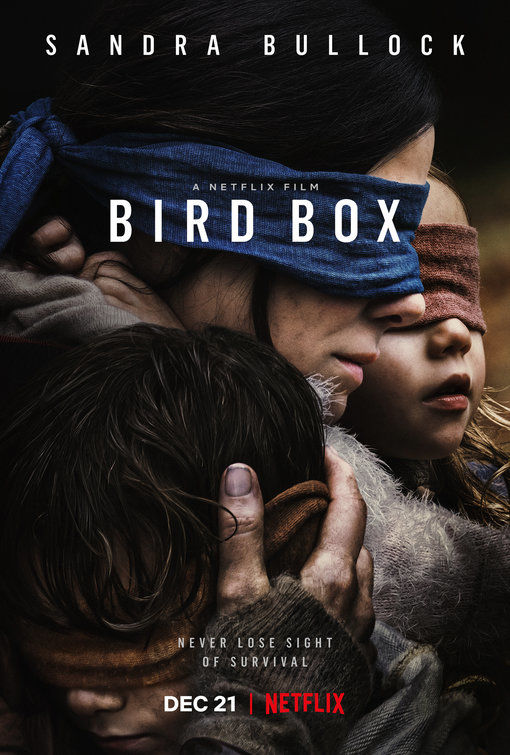
Bird Box (2018)
A movie that was simultaneously successful and a joke in the increasingly nihilistic attitude of today’s world; it earned its status as the most successful original Netflix film in the history of the platform, but it also caused the less intelligent people of society to take the Bird Box Challenge in an effort to take advantage of their fifteen minutes of fame. This challenge like its predecessor, the Tide Pod Challenge ended up getting people hurt and challenged a lot more people to denounce Darwinism in the face of such blatant disregard of responsible action. The social media frenzy that surrounded this movie may have been what everyone was really talking about, but it didn’t detract from the overall cosmic message of the movie.
Like any true Lovecraftian horror story, we see from the very beginning that the horror element of this entire story is the indescribable, madness-inducing truth of the evil they are facing. The perfection of cosmic horror is that the source of fear doesn’t have to be seen by the audience in order to really bring the point home. In fact, the less we see of the source the scarier it becomes, that which cannot be defined or that which cannot hope to be known speaks to our fear of the unknown. Fear of the unknown is one of the oldest fears to plague humanity, it harkens back to the days where our fight or flight response to dangerous situations was what kept us alive. This indescribable creature that terrorizes the survivors of the Bird Box universe is exactly what Lovecraft’s cosmic horror is truly all about–we see that just the sight of these creatures creates such a huge wave of existential dread in a person that they literally respond by committing suicide. Those who are already suffering from mental illness just see the truth of what they already know and seek to show their truth to others.
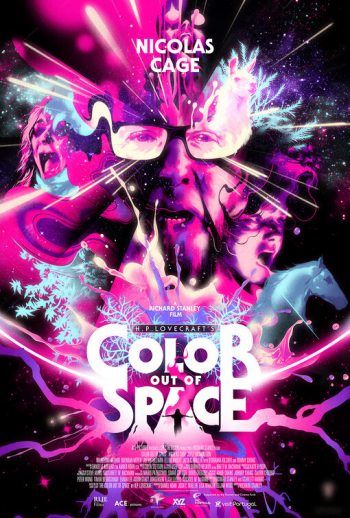
Color Out of Space (2019)
This take on Lovecraft’s Color Out of Space (2019) marks the first truly successful adaptation of H.P. Lovecraft’s writing to the screen. The original short story of the same title was noted to be Lovecraft’s favorite amongst his own short stories and can be listened to on YouTube.
Considering the failure of many of Lovecraft’s previous works being translated to the screen, this movie was both highly anticipated and doubted. Horror lovers eagerly awaited to see if it would be a true flop as all of the attempts that had come before it, or if it would actually capture Lovecraft’s vision. This undertaking, Nicolas Cage notwithstanding, was an incredibly solid effort to capture that lovely, wonderful, existential dread that Lovecraft made so popular. The jump scares in this movie are nearly non-existent, instead, we got the frightening tale that we were hoping for in true Lovecraft form.

Georgia-based author and artist, Mary has been a horror aficionado since the mid-2000s. Originally a hobby artist and writer, she found her niche in the horror industry in late 2019 and hasn’t looked back since. Mary’s evolution into a horror expert allowed her to express herself truly for the first time in her life. Now, she prides herself on indulging in the stuff of nightmares.
Mary also moonlights as a content creator across multiple social media platforms—breaking down horror tropes on YouTube, as well as playing horror games and broadcasting live digital art sessions on Twitch.


One reply on “Cosmic Horror Movies that Perfectly Capture Existential Dread”
Thanks a lot, I have been looking forward to finding new horror movies to watch.